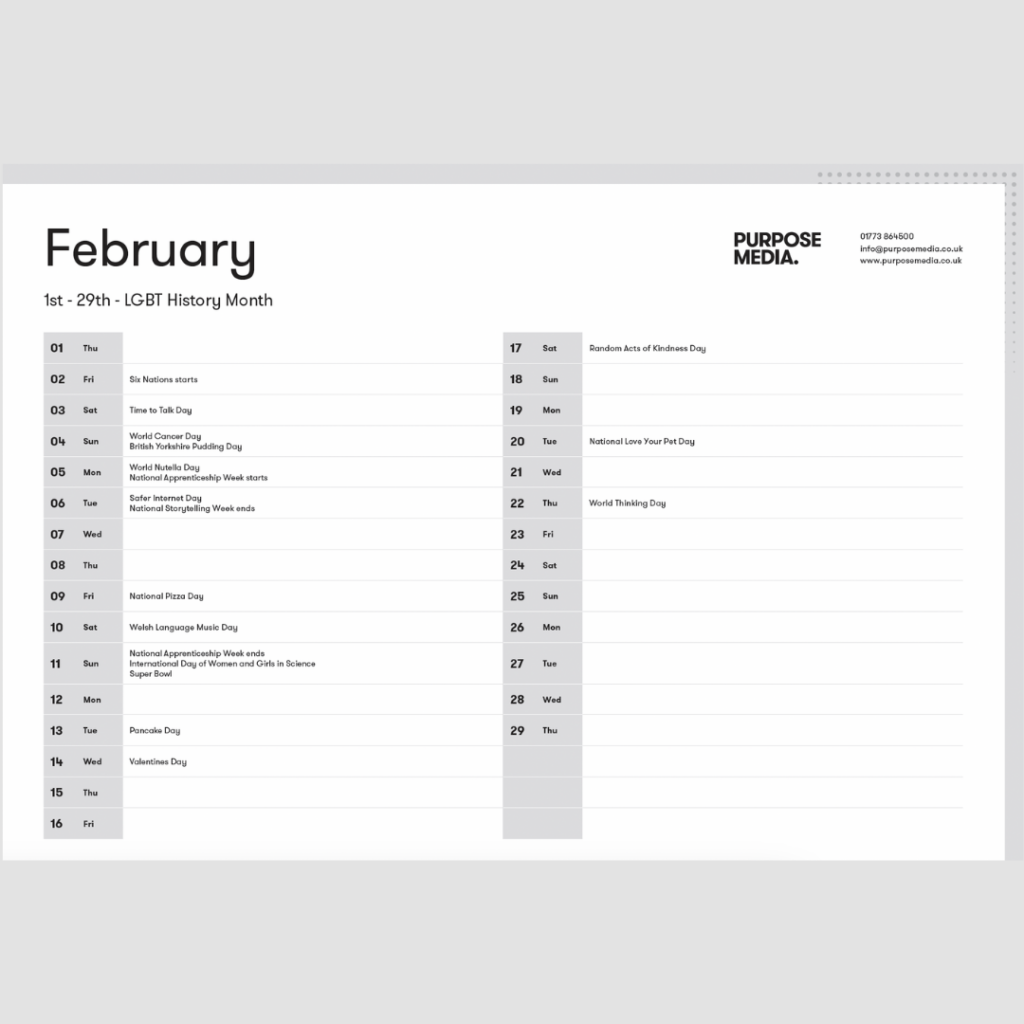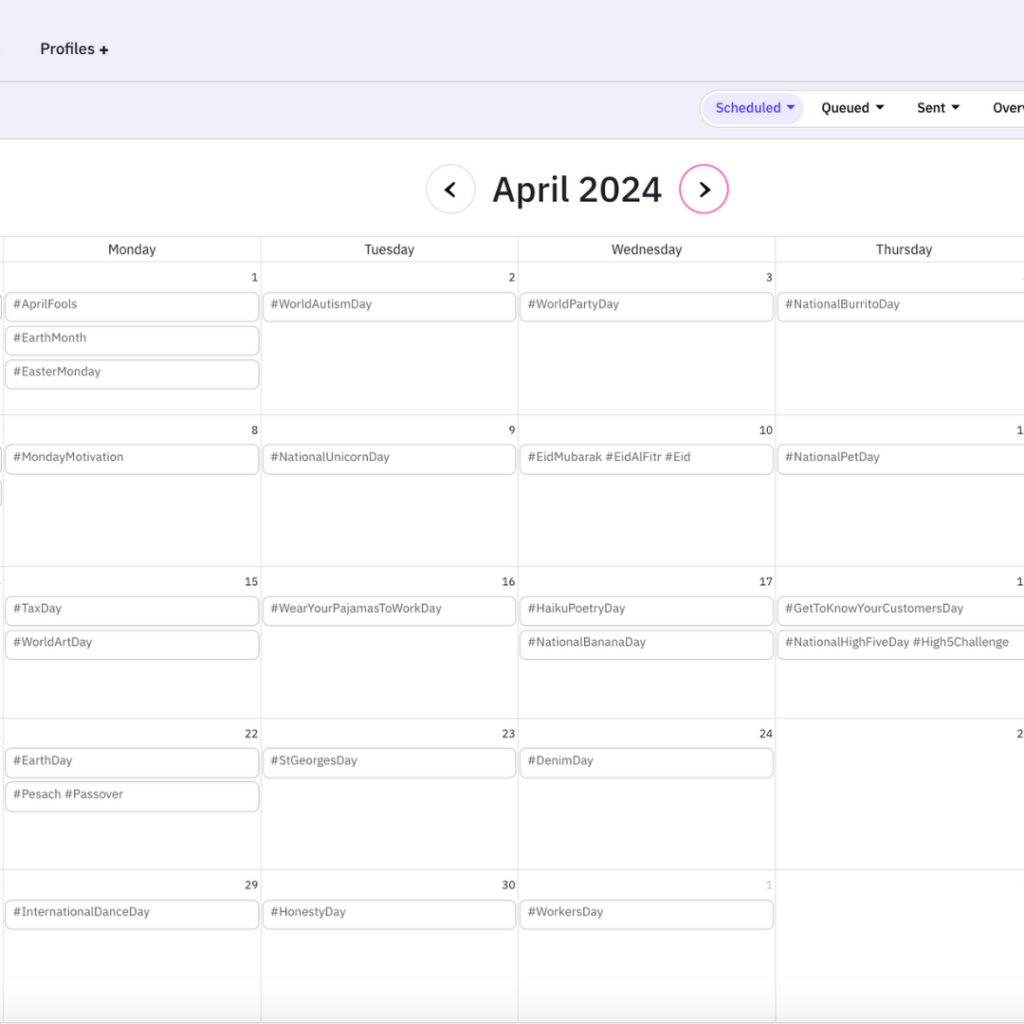The essential social media checklist for SMEs.

It allows small and medium-sized enterprises a way to compete with larger companies for attention, showcase company culture and explain how their offering provides a solution for their customers.
As of January 2024, there were 5.04 billion social media users worldwide, which is why businesses must be active and relevant to meet their audience’s needs.
We know that small businesses often require their social media marketers to wear many hats, from being able to write captions, to shooting video reels and even creating strategies. This is why we’ve compiled a helpful checklist packed with tips to optimise your social media efforts.

Social media marketing means using platforms like Facebook, LinkedIn, X, and Instagram to connect with your audience through compelling content.
When you invest in social media, you can help your business reach new customers and become more well-known. You also get to learn directly from your customers, discovering more about demographics like their age, interests, and needs, which can help you plan future marketing.
You can build stronger relationships with your customers and increase sales and website visits by analysing your results. Many platforms also offer paid ads to reach even more people and encourage conversions.
That’s why social media is an important marketing tool. Having a checklist can make things easier, helping you stay organised and to create content that works.
To make the greatest impact on social media for your SME, you’ll need a winning social media strategy. To create this, you should consider:
To ensure your strategy is working and you’re meeting the goals you’ve set, you’ll need to track metrics.
Depending on whether you’re aiming to increase awareness, engagement or return on investment, specific metrics will help inform your strategy.
Examples of metrics you could track are as follows:
It’s important to keep your goals in mind when choosing metrics, whether it’s based on the marketing funnel or your industry.
For example, organic social is perfect for increasing awareness, but it isn’t where you’ll get sales. If this is a goal you have in mind, then it may be worth considering alternative platforms or paid social ads.
After setting goals, you’ll need to identify the social media platforms your customers use.
By analysing the reporting tools within each social media platform or those available in scheduling software, you will be able to assess how your content is performing.
Utilise the reporting tools to gauge content performance. While each platform offers free analytics, managing multiple platforms can be tedious. Fortunately, many content schedulers, like Hootsuite, include built-in reporting capabilities, consolidating data for easy viewing and export.
Leveraging these reports to analyse content performance against your goals allows you to adjust your content plan, as needed. We recommend monthly assessments for timely interventions if content underperforms, engagement decreases, or messaging fails to resonate with your audience.
If you’re interested in creating a content plan, we discuss them in more detail below.
Don’t waste time building campaigns for platforms that won’t work. Instead, create and cater your content to the platforms which will benefit you.
If you’re unsure which platforms to choose, you can perform a social media audit, which includes conducting a competitor analysis and exploring platforms your audience is active on. From there, you can identify any gaps in their presence and capitalise on this or establish a presence on the same platforms.
From your monthly analysis, you’ll also be able to determine which platforms are performing the best and take action to improve their performance. You can even decide not to use a platform if others are more successful, as your time is better spent focusing on these.
Remain relevant by keeping up to date with what is happening on social media by checking LinkedIn and X to see what others are talking about.
By being visible you can position your business as dynamic and engaged.
Leveraging your social media to provide great customer service won’t ever be a bad thing. The majority of 18-54-year-olds see social media as an effective channel for customer service, so ensure there are opportunities for your customers to interact with you.
Equally, be sure to regularly check your social media channels and interact with your followers by replying to comments and messages, and even liking their interactions on your posts.

Once you have your strategy and goals in place, it’s time to think about the types of content you want to post and where.
See our tips below to help you curate your content plan and give your posts the best helping hand.
Let everyone know who you are and what your small business is offering by using clear and consistent messaging across your social media profiles.
You should look to showcase your personality and passion, keeping it consistent across your social platforms – this allows new potential customers to connect with you, wherever they find you first.
Ensure each platform has:
It is important to have a strong brand identity with a developed tone of voice which matches your personality, that you can use across your platforms.
While your tone may vary between audiences, try to keep this as consistent as possible across all your channels, with each piece of content showing how you can solve your customers’ pain points.
If this is something you are looking to improve or build, our team at Purpose Media can help you create a brand identity that engages and inspires.
Collecting hashtags that will get your content in front of your customers is imperative. Creating a list of hashtags that you can use will allow you to group content around a topic, motivate customers to engage and expand your audience to get more reach.
Ensure that each is relevant and will provide you with the types of conversation you want. You don’t want to end up using a hashtag that aligns your business with something inappropriate.

To remain organised and be able to plan ahead, create a content calendar so you can be consistent. Not only will customers come to expect content from you on certain days, but you can also use this to assess which days are having the best impact for you.
By using a calendar, you will also be able to batch-create content and schedule it using apps and websites, such as Later, Hootsuite, Planable and Sendible.
If you’re looking for ideas or inspiration, our content calendar includes several tips and tricks, as well as national days.
Mixing both content and media types not only keeps things fresh for you but for your audience too. If you’re noticing a pattern of repetitiveness on your feed or your engagement rates are stagnating, consider switching it up.
There are various post tools you can use to your advantage, such as:
Video continues to be a really popular content type, which is capable of holding your audience’s attention for longer. Users that incorporate platform tools, such as creating Reels on Instagram, are often more favoured too.
By using these tools, you can mix up the types of content to motivate audience engagement and generate meaningful discussions with your followers. Here are some suggestions on post types:
Having strong visual content not only grabs people’s attention but also provides followers with a reason to like, comment and follow.
Often, a visual element can either enhance the accompanying copy or convey information quickly. It also allows you to make your brand stand out among others while showcasing your brand identity and what sets you apart.
To simplify the creation process and maintain consistency with your brand, you can use platforms such as Canva. Additionally, our design team can create visuals, animations and videos to help you stand out from your competitors
Elevate a post and make it stand out with well-placed emojis in your copy. These can add emotion and personality to your communications.
If you have a large chunk of text, consider splitting it off into more digestible sentences, while adding a complementary emoji to help break it up further.
Remember to consider your audience’s accessibility when creating content, whether it’s text or visuals. Many platforms now offer features to enhance inclusivity and connection.
For instance, LinkedIn now provides captions for videos, while X and Instagram allow you to add ‘alt text’ or image descriptions, allowing screen readers to describe your visuals out loud.
Although platforms generate ‘alt text’ automatically, it may not always accurately represent your content. So, it’s important to review and adjust as needed.
Additionally, keep in mind that screen readers will also read out every emoji in your copy. Placing emojis in the middle of your text could disrupt your carefully considered message meaning it may be lost in translation with your audience.

According to Sprout Social, the amount of time internet users spend on social media per day, worldwide, is 143 minutes, making it hard to ensure your content is seen by your audience when they’re online.
However, by scheduling your social content, you have the freedom to post at “peak” engagement days and times, even if you’re not available at those specific times. You’ll be able to maintain a consistent presence and set times when you’re not at work or at your desk to keep your brand present and visible to all of your followers.
There are several scheduling tools, such as Later, Hootsuite or Sendible (see above), which allow you to upload video, carousels, single images and PDFs to ensure variety within your content.
This does require you to batch-create content, however, doing so can take stress and pressure away, especially if you work alone.
Just be cautious to keep an ear to the ground for any local or big news stories, so none of your posts will look out of place or in bad taste.

Just as each business’s target audience is different, each social media platform has a unique personality too.
Before beginning to create assets or captions, you need to consider your personas when choosing your platform.
To help, we’ve listed a summary of each below to hopefully guide you:
Although many use LinkedIn to find new job opportunities, it is also a great way for businesses to build their brand, develop and market to B2B and B2C.
One of the most used social media platforms globally, Facebook has a wide demographic range and offers opportunities to create advertising campaigns across Meta products. It also offers the opportunity to create an e-commerce shop and a Facebook page, so you connect with your audience further.
Catering to a slightly younger demographic than its Meta counterpart, Instagram users tend to be between 18 and 34. It’s a far more visual platform, so your content needs to be as visually appealing as possible to stand out, but it does offer in-app shopping, allowing users to buy products they see in posts, Stories and Reels.
X, previously Twitter, is a more conversational social media platform. It’s perfect for sharing and conversing with your customers and is often the place people go to find out what’s happening right now. It’s the perfect platform to jump on and offer live commentary (if related to your industry).
One huge benefit of TikTok is you don’t need a huge budget to create and produce high-quality content. However, this platform is all about creativity, you need to stand out by creating content which is out of the box and feels authentic. The pay-off though is high if your content performs well, as there’s a chance for virality and it being seen by thousands.
Although it isn’t the place many visitors make purchasing decisions, Pinterest is one of the most powerful visual search engines available. Many users love Pinterest to find and save new ideas. If your brand can create content which is visual and ‘Pin-able’, you could reach new audiences.
As a video-sharing platform, YouTube showcases a lot of educational content, including product demos and how-to videos. YouTube Shorts also provides a dynamic way to engage potential customers through short videos that give viewers a sneak peek into how your offerings work and your key benefits.
We know how busy social media managers can be and the challenges of staying on top of each platform. If you’re looking for support with maximising your social media impact and increasing your brand awareness, Purpose Media can help.